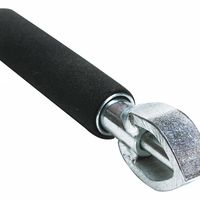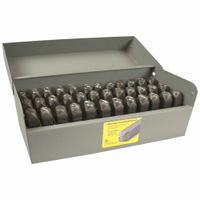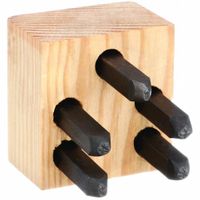Call +(254) 703 030 000 / 751 483 999 / 721 704 777
.....Read More
Frequently Asked Questions
What are hand stamps used for?
Hand stamps are versatile tools used for various purposes across different settings. In event management, they serve as a quick and efficient method for granting access or re-entry to venues, ensuring that only authorized individuals can enter. This is particularly useful in concerts, festivals, and amusement parks, where large crowds are present.
In the hospitality industry, hand stamps are often used in nightclubs and bars to indicate that patrons have paid an entry fee or are of legal drinking age. This helps staff manage entry and maintain security without the need for cumbersome ticket systems.
In educational and recreational settings, hand stamps are used as a motivational tool or reward system for children. Teachers and camp counselors use them to acknowledge good behavior, participation, or achievement, making them a fun and interactive way to encourage positive actions.
In healthcare, hand stamps can be used to mark patients or visitors for identification purposes, ensuring that they have been screened or have the necessary permissions to be in certain areas of a facility.
In the retail sector, hand stamps can be used during sales events or promotions to track customer participation or to validate special offers and discounts.
Additionally, hand stamps are used in logistics and manufacturing for quality control and inventory management. They can mark items that have been inspected or approved, streamlining processes and ensuring consistency.
Overall, hand stamps are a practical, cost-effective solution for identification, access control, and communication across various industries, providing a simple yet effective way to manage and organize people and processes.
How do you use a hand stamp with a hammer?
To use a hand stamp with a hammer, follow these steps:
1. **Select the Surface**: Choose a flat, stable surface to work on. The material should be suitable for stamping, such as metal, leather, or wood.
2. **Prepare the Material**: Clean the surface of the material to ensure it is free from dust and debris. This helps achieve a clear impression.
3. **Position the Material**: Place the material on a solid, non-slip base, like an anvil or a sturdy workbench, to prevent movement during stamping.
4. **Choose the Stamp**: Select the appropriate hand stamp for the desired impression. Ensure the stamp is clean and free from any residue.
5. **Align the Stamp**: Hold the stamp perpendicular to the surface. Align it carefully to ensure the impression is straight and positioned correctly.
6. **Grip the Stamp**: Hold the stamp firmly with one hand, keeping fingers away from the top to avoid injury.
7. **Select the Hammer**: Use a suitable hammer, typically a ball-peen or a brass hammer, to avoid damaging the stamp.
8. **Strike the Stamp**: With the hammer in your other hand, deliver a firm, controlled strike to the top of the stamp. The force should be sufficient to create a clear impression but not so hard as to damage the stamp or material.
9. **Check the Impression**: Lift the stamp carefully to check the impression. If it’s not clear, realign and strike again, ensuring consistent pressure.
10. **Repeat if Necessary**: For multiple impressions, repeat the process, ensuring consistent alignment and pressure for uniform results.
11. **Clean Up**: After stamping, clean the stamp and store it properly to maintain its condition.
Safety Tip: Always wear safety goggles to protect your eyes from potential debris.
What materials can be stamped with hand stamps?
Hand stamps can be used on a variety of materials, each requiring specific considerations for optimal results:
1. **Paper**: Most common for stamping, including cardstock, construction paper, and specialty papers. Different inks can be used depending on the paper's absorbency.
2. **Fabric**: Natural fibers like cotton, linen, and canvas work well. Fabric inks or paints are recommended to ensure durability and washability.
3. **Wood**: Smooth, unfinished wood surfaces are ideal. Use pigment-based inks or acrylic paints for better adhesion.
4. **Leather**: Both genuine and faux leather can be stamped. Special leather inks or paints are necessary to prevent smudging and ensure longevity.
5. **Metal**: Requires specialized inks or paints that can adhere to non-porous surfaces. Pre-treatment with a primer may be necessary for better results.
6. **Plastic**: Smooth plastics can be stamped using solvent-based inks designed for non-porous surfaces. Test on a small area first to ensure compatibility.
7. **Glass**: Use permanent inks or paints specifically formulated for glass. Heat-setting may be required to make the design permanent.
8. **Ceramics**: Unglazed ceramics can be stamped with ceramic paints or inks. Glazed surfaces require special inks that can adhere to the slick surface.
9. **Rubber**: Stamping on rubber requires inks that can dry on non-porous surfaces. Often used for creating custom designs on rubber stamps themselves.
10. **Clay**: Both air-dry and kiln-fired clays can be stamped before drying. Use water-based inks or paints for best results.
11. **Stone**: Porous stones can be stamped with permanent inks or paints. Sealing the stone afterward can protect the design.
Each material may require specific types of inks or paints to ensure the stamped design adheres properly and remains durable. Testing on a small area is recommended to achieve the desired effect.
How do you ensure accuracy when using hand stamps?
To ensure accuracy when using hand stamps, follow these steps:
1. **Surface Preparation**: Ensure the stamping surface is clean, dry, and flat to prevent smudging or uneven impressions.
2. **Stamp Quality**: Use high-quality stamps with clear, well-defined designs. Regularly inspect for wear and tear.
3. **Ink Selection**: Choose the appropriate ink type for the material being stamped. Ensure the ink pad is adequately inked but not overly saturated.
4. **Alignment Tools**: Use guides, rulers, or templates to align the stamp correctly, especially for repetitive tasks or when precision is crucial.
5. **Consistent Pressure**: Apply even pressure across the stamp to ensure a uniform impression. Practice on scrap material to gauge the necessary force.
6. **Test Stamping**: Conduct test stamps on similar material to check for clarity and alignment before proceeding with the final stamping.
7. **Controlled Environment**: Work in a stable environment with minimal distractions to maintain focus and precision.
8. **Regular Maintenance**: Clean stamps regularly to remove ink build-up and prevent distortion of the design.
9. **Training and Practice**: Ensure that individuals using the stamps are adequately trained and have practiced to develop a steady hand and familiarity with the tools.
10. **Quality Checks**: Implement a quality control process to review stamped items for accuracy and consistency, making adjustments as needed.
11. **Documentation**: Keep records of stamping procedures and any issues encountered to refine techniques and improve future accuracy.
By adhering to these practices, you can significantly enhance the accuracy and quality of hand-stamped impressions.
What are the safety precautions when using hand stamps?
1. **Wear Protective Gear**: Use gloves to protect your hands from ink and potential allergens. Safety goggles can prevent ink splashes in the eyes.
2. **Use in Well-Ventilated Areas**: Ensure the area is well-ventilated to avoid inhaling fumes from the ink, especially if using solvent-based inks.
3. **Read Instructions**: Follow the manufacturer's instructions for both the stamp and the ink to ensure proper use and maintenance.
4. **Test on Scrap Material**: Before stamping on the final surface, test on a scrap piece to ensure the ink is suitable and to practice the stamping technique.
5. **Avoid Skin Contact**: Minimize direct contact with ink to prevent skin irritation. Wash hands thoroughly after use.
6. **Keep Away from Children**: Store stamps and ink out of reach of children to prevent accidental ingestion or misuse.
7. **Proper Storage**: Store stamps and ink in a cool, dry place to prevent degradation and accidental spills.
8. **Clean Stamps Regularly**: Clean stamps after each use to prevent ink buildup, which can affect the quality of the stamp and lead to smudging.
9. **Use Appropriate Ink**: Choose ink that is suitable for the material you are stamping on and ensure it is non-toxic if it will come into contact with skin.
10. **Dispose of Waste Properly**: Dispose of used ink pads and cleaning materials according to local regulations to prevent environmental contamination.
11. **Avoid Over-inking**: Apply ink sparingly to prevent smudging and ensure a clean impression.
12. **Check for Allergies**: Be aware of any allergies to ink components and choose hypoallergenic options if necessary.
How do you maintain and store hand stamps?
To maintain and store hand stamps effectively, follow these steps:
1. **Cleaning**: After each use, clean the stamp with a damp cloth or stamp cleaner to remove ink residue. Avoid using harsh chemicals that can damage the rubber.
2. **Drying**: Ensure the stamp is completely dry before storing to prevent mold or ink smudging.
3. **Storage Environment**: Store stamps in a cool, dry place away from direct sunlight to prevent the rubber from hardening or cracking.
4. **Positioning**: Keep stamps in an upright position or flat with the rubber side facing up to avoid distortion.
5. **Protective Covers**: Use protective covers or cases to shield the stamps from dust and accidental damage.
6. **Organizing**: Arrange stamps in a dedicated box or drawer with compartments to prevent them from rubbing against each other. Label compartments for easy identification.
7. **Temperature Control**: Avoid storing stamps in areas with extreme temperatures, as heat can warp the rubber and cold can make it brittle.
8. **Regular Inspection**: Periodically check stamps for wear and tear. Replace any that are damaged to ensure clear impressions.
9. **Ink Management**: Use the appropriate ink for your stamps. Avoid over-inking, which can lead to smudging and excess residue.
10. **Usage Rotation**: If you have multiple stamps, rotate their use to ensure even wear and prolong their lifespan.
By following these guidelines, you can maintain the quality and longevity of your hand stamps, ensuring they provide clear and consistent impressions over time.
What are the different types of hand stamps available?
1. **Pre-Inked Stamps**: These stamps have ink impregnated in the rubber or polymer die, providing thousands of impressions before needing a refill. They offer clean, crisp impressions and are ideal for detailed designs.
2. **Self-Inking Stamps**: These stamps have a built-in ink pad that re-inks the stamp die after each use. They are convenient for repetitive stamping and are available in various sizes and shapes.
3. **Rubber Stamps**: Traditional stamps with a rubber die mounted on a wooden or plastic handle. They require a separate ink pad and are versatile for different types of inks and surfaces.
4. **Clear Stamps**: Made from clear polymer, these stamps are mounted on acrylic blocks for precise placement. They are popular for crafting and scrapbooking due to their transparency.
5. **Foam Stamps**: Made from foam material, these stamps are lightweight and often used for crafting projects. They are suitable for use with paint and other thick mediums.
6. **Date Stamps**: These stamps include adjustable bands to change the date, making them useful for office and administrative tasks.
7. **Number Stamps**: Similar to date stamps, these have adjustable bands for numbers, used for numbering documents or items.
8. **Embossing Stamps**: These create a raised impression on paper, often used for official documents or decorative purposes.
9. **Custom Stamps**: Tailored to specific designs or logos, these can be any of the above types and are used for branding or personalized projects.
10. **Pocket Stamps**: Compact and portable, these are designed for on-the-go use, often in a self-inking format.
11. **Art Stamps**: Designed for artistic purposes, these come in various designs and are used in crafting and art projects.







